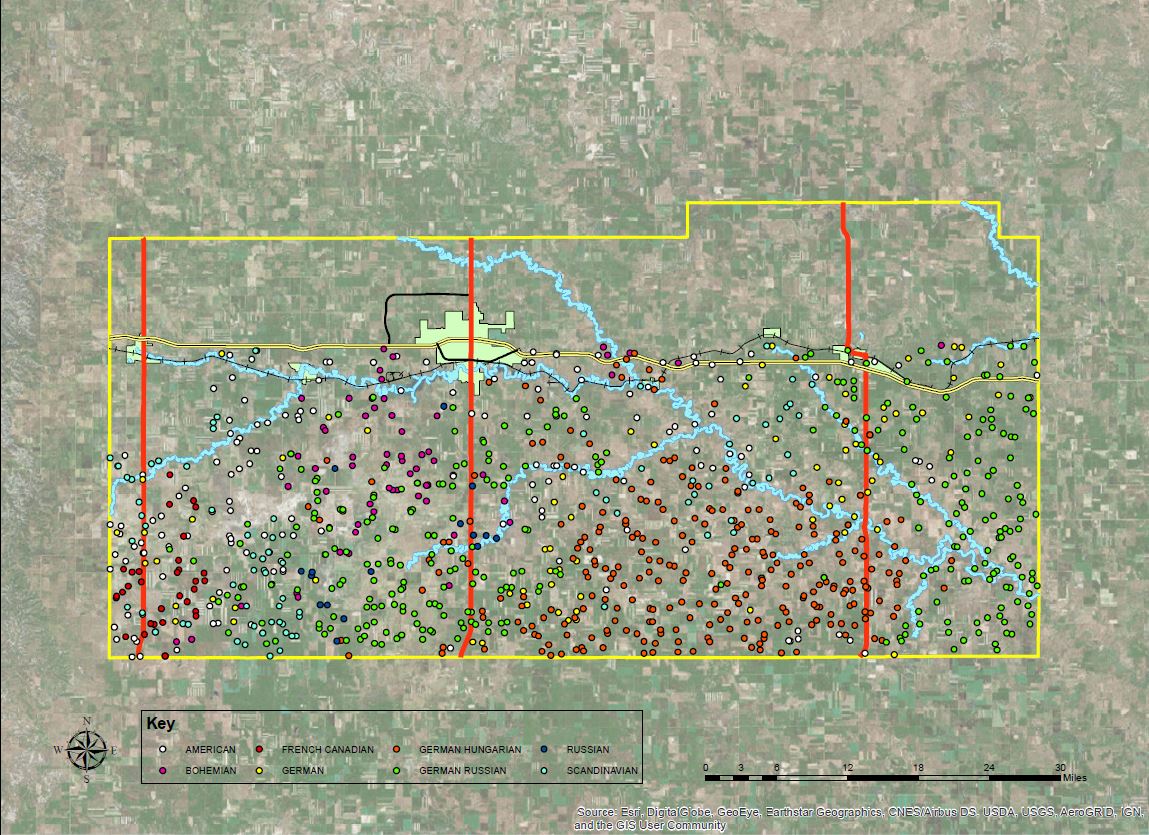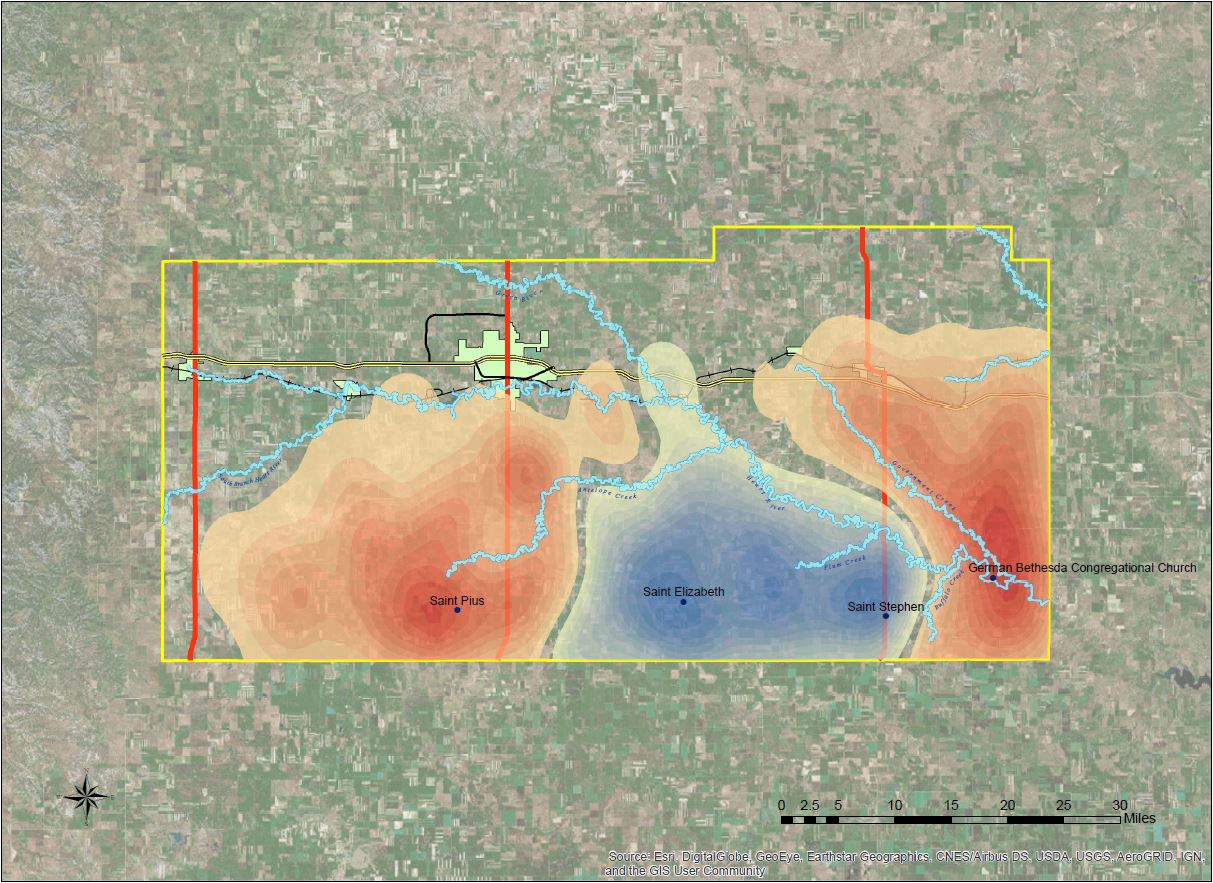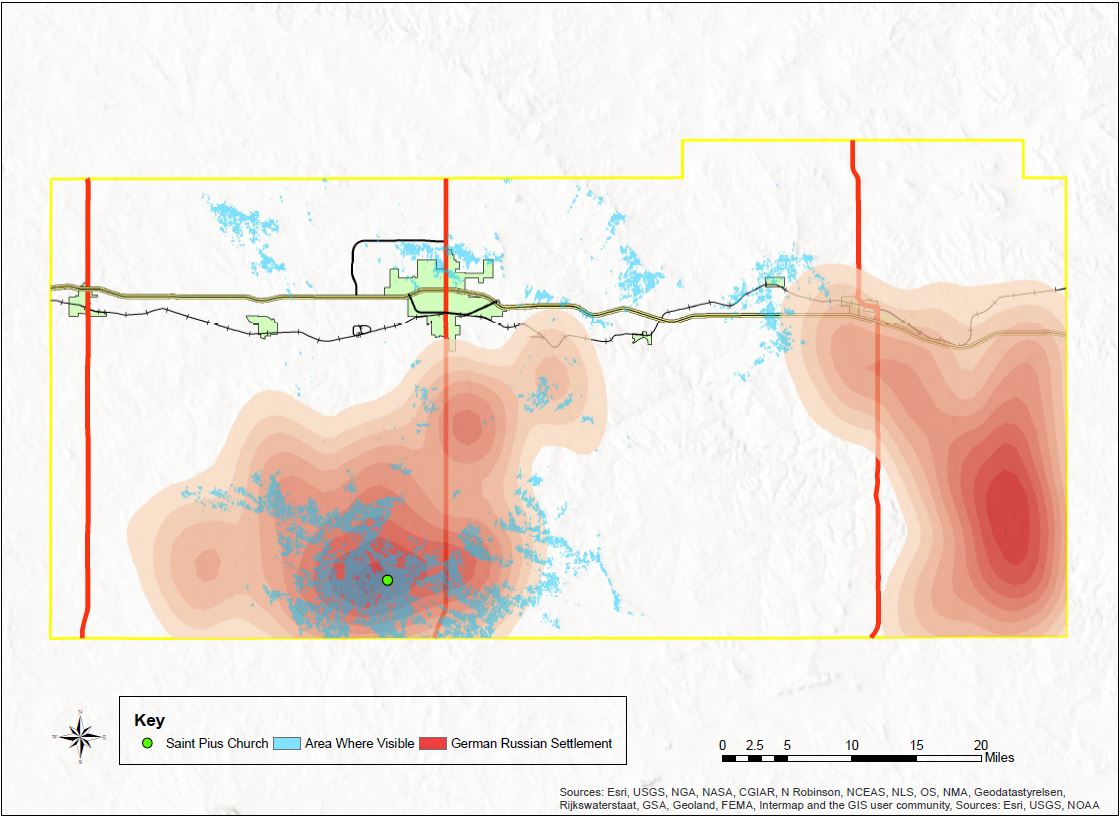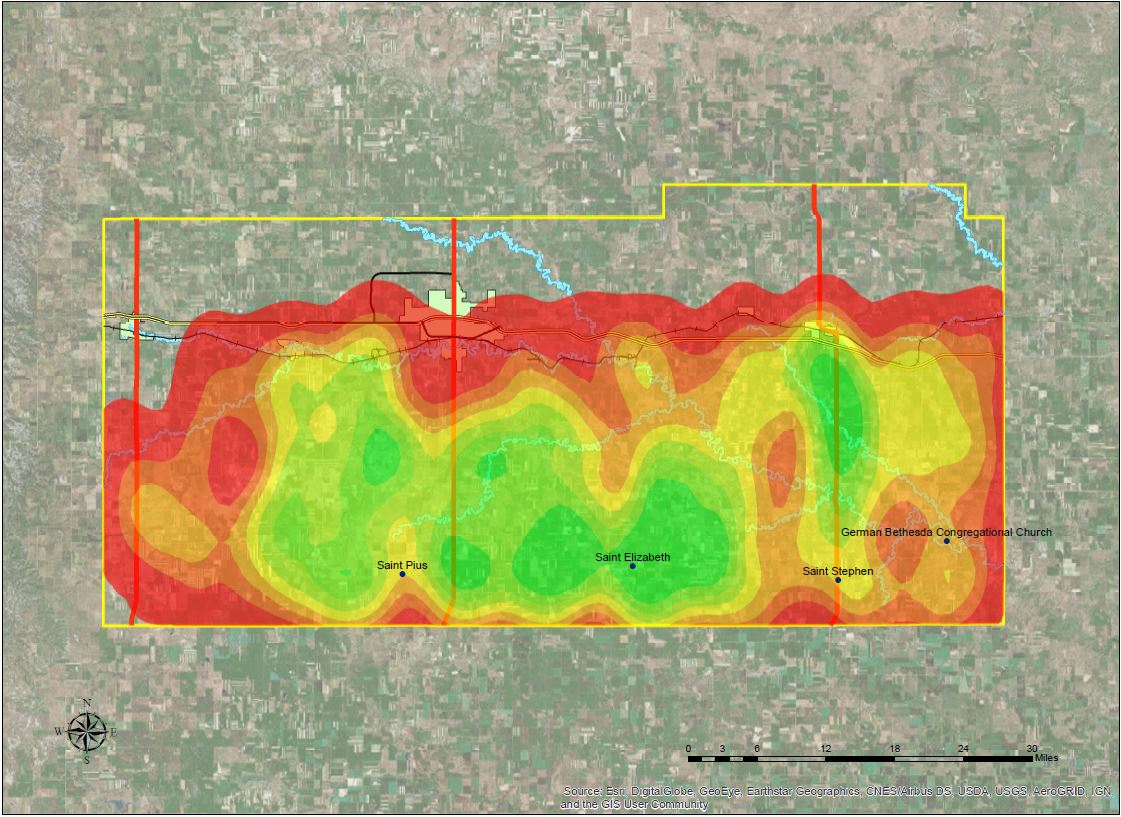6 A View from Above
Travis Olson
There’s a line on the North Dakota Tourism website which reads: “…the heavens are in North Dakota.”[1] And it’s true. There are few other places where you feel the sky’s presence as easily and as often as you do while standing on the Upper Great Plains. There have been moments where our eyes were set on the horizon watching a fast-approaching storm, moments riding in the backseat of a pick-up across miles of recently-harvested wheat fields searching for an abandoned farmstead in a vast sea of fog, and moments standing atop a butte with the World’s Largest Holstein Cow watching the sun go down and the stars come out until they’re too many to count.
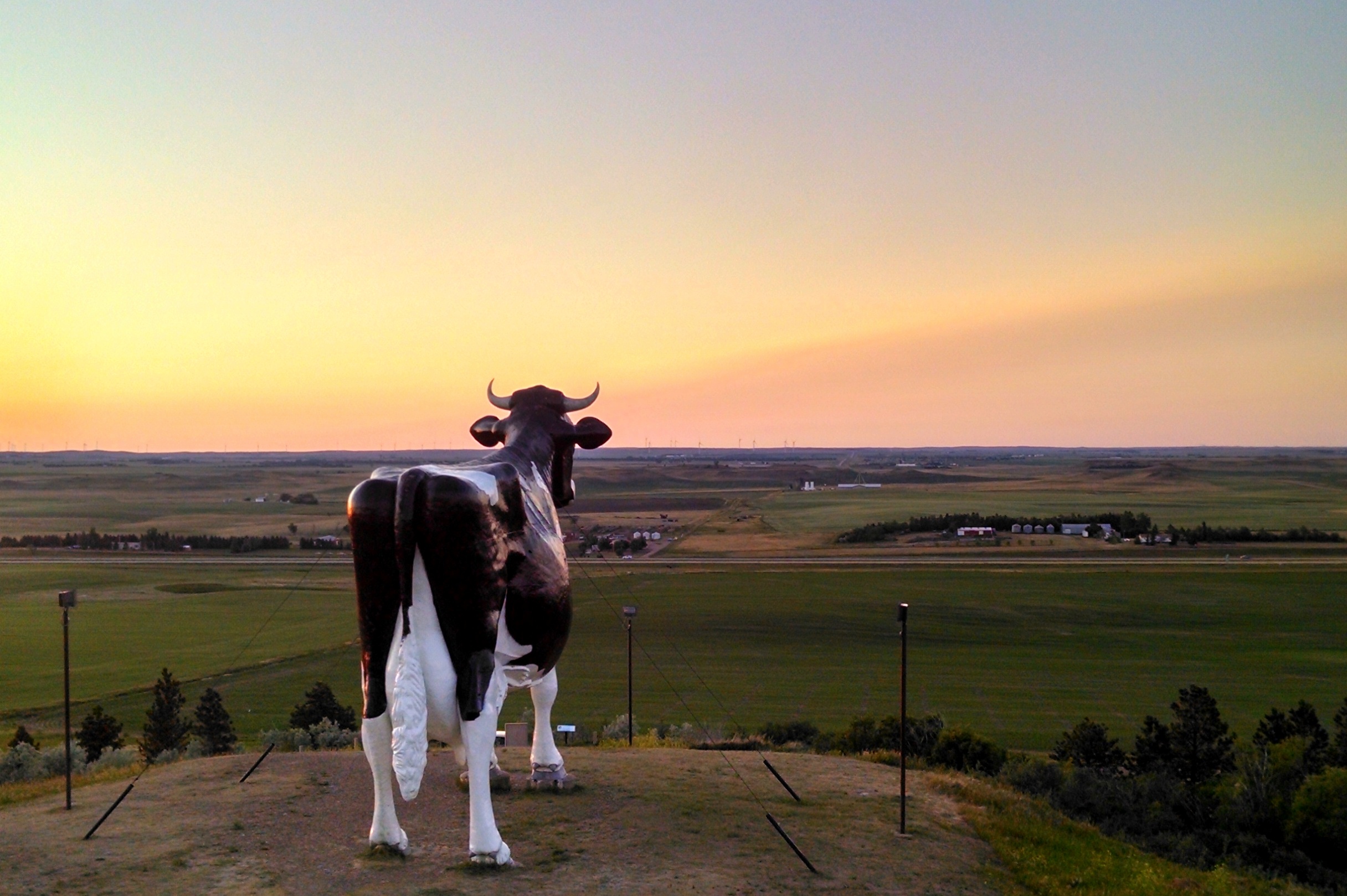
So somehow, it feels most appropriate that our research has been an exercise in scale. Our studies have taken us through attic crawl-spaces to measure roof framing elements, on our hands and knees tracing baseboards, to driving along fence lines looking for farmsteads on the horizon. We’ve taken rubbings of cast brass door hardware, climbed the rafters of old barns, and dragged our measuring tapes across farmsteads; yet even the smallest of elements have driven our research outward. Those brass door knobs may have been bought through a mail-order catalog from the Sears and Roebuck Company in Chicago. They may have been cast in Philadelphia. They were purchased and installed in the house by an immigrant from Russia, of German ancestry, who was convinced to move across the world by a land agent from Missouri. While the object may be small, the systems and networks which brought that particular item to its specific place in time are immense.
The project that makes up this chapter takes a step back from the individual objects, farm buildings, and farmsteads in an attempt to look at the larger cultural patterns of white, largely Eastern European settlement in southern Stark County during the late nineteenth and early twentieth centuries. The two largest ethnic groups to settle in the area were the Germans from Russia and the Germans from Hungary, each of which carried particular cultural traditions to the Dakota frontier. Our research to this point has largely focused on the German-Russian community around Schefield and the no-longer-surviving St. Pius Church, but we’ve long been aware of the equally rich history of the German-Hungarians who settled in the area around Lefor—although people who we’ve spoken with usually just say “over there” and punctuate the thought with a gesture to the east.
Through our conversations with members of the community we’ve collected stories of neighborly rivalries between the two cultures, and time and time again those who we had talked to spoke of the “line” between Schefield and Lefor. While we weren’t expecting to find an actual line dividing the two cultural groups, we took that idea and moved outward. How clear was the boundary between the German-Russians and the German-Hungarians, and what were its causes? Our curiosity had us load into the car one morning to drive Lefor Road east from Highway 22 to see if there was a landscape feature, a river or a ridge, which would have dictated a separation, but because of the cultural similarities between the two groups, we weren’t sure of which farms were German-Russian and which were German-Hungarian. We weren’t sure where to even look. We needed to conduct more research.
“There was a real barrier.” -Peter Betchner.
Oral interview with Peter and Marie Betchner, conducted June 26, 2017 by Anna Andrzejewski and James Sexton.
This chapter is the result of that research. Beginning with the data compiled for the 1910 U.S. Census and an atlas of Stark County from 1914, I identified where each of the nearly 1,300 farmsteads south of the former Northern Pacific Railroad were located. By cross-referencing the two documents I was able to place families into each of the farms to ascribe information to each individual location. Aerial photography from the 1950s and contemporary satellite imagery helped ascertain which farms were still in the landscape and which have been lost to time. Utilizing digital mapping tools, I was able to run spatial analyses to discern patterns and generate maps which will inform future research, and which help to better understand the spatial context of the farms that we’ve been fortunate enough to visit thus far.
This series of maps was inspired by the individual farmsteads we’ve encountered and by the places where we’ve put our boots in the soil. While it feels as though we’ve visited so many of the farms in the area, where had we really been? Who were we missing and what are their stories? The maps were inspired by the conversations we had with the people in the community. Where was “over there”? And what was this “line” that they kept referring to? But most of all this series was inspired by the sky. To look down from above is to understand this place from a greater vantage and at a broader scale. It is an attempt to approach the understanding or sense of place, which as the sky itself, is simultaneously constant and ever-changing.
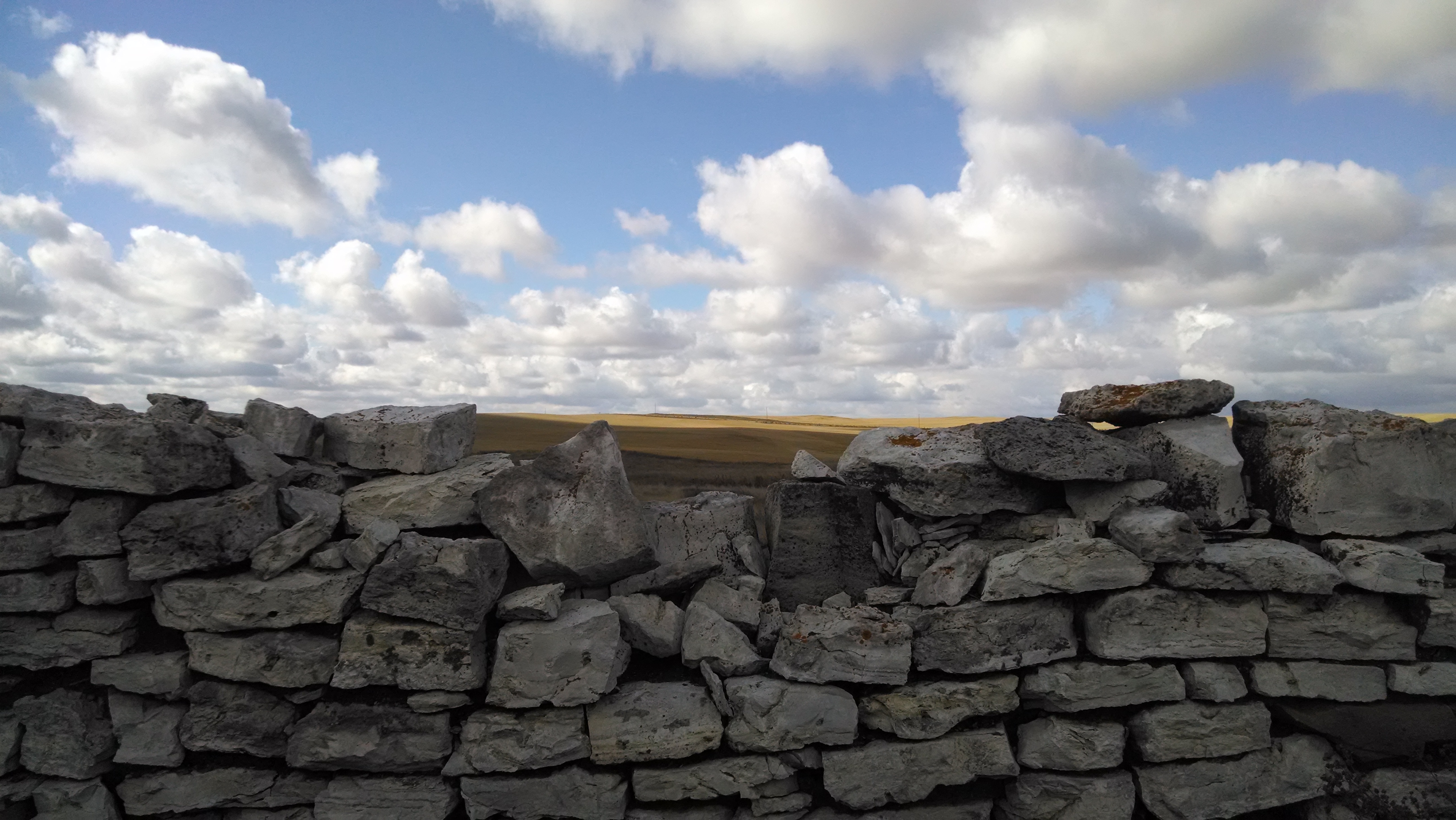
Cultural Distribution: Who Were these people?
To research rural settlement in Stark County, the first step required locating the farms. Setting the study area as those townships south of the former Northern Pacific Railroad, I used the 1914 atlas to identify the locations of the area’s farmsteads.[2] Cross-referencing the names from the atlas with those from the 1910 census, we were able to attribute cultural data to specific points on the map with the hope that patterns would become apparent.
This point map identifies the farmstead locations of the eight most populous groups of white settlers and demonstrates the complexity of the ethnic environment in early twentieth-century Stark County. As overwhelming as the data may appear at first glance, clusters of colored dots begin to emerge signifying settlement patterns.
Community: Where is this line they keep talking about?
There does seem to be a certain level of disconnect between the German-Russian and German-Hungarian settlements. While their farmsteads are fairly interspersed with each of the other ethnic groups they are less-so with one another. This may be an effect of time: earlier waves of German-Russian immigrants coming north from South Dakota and Nebraska gave way to a wave of German-Hungarian immigration, which in-turn gave way to a later wave of German-Russians.[3] It may be an effect of the railroad: German-Russians arrived in Richardton and settled the area south of that town. Finding most of that land sold, German-Hungarians moved west to the town of Gladstone and settled the area south of that town, and so on. It may be the effect of land agents who sold the land east-to-west as they made their way across Europe west-to-east. The truth, however, probably lives in a combination of these.
The eastern boundary between the German-Russians and the German-Hungarians largely follows the natural boundary formed by Buffalo Creek and the Heart River, but there doesn’t seem to be a natural element which forms the line between the settlements of Schefield and Lefor. Instead this line is formed by the identity of the other, of “over there” as opposed to “right here.” Yet despite it not having a physical manifestation, it remained present in the minds of the people through most of the twentieth century. Many of the people that we interviewed spoke about how little the two groups interacted despite their similarities and proximity; and a few even spoke about how intermarriage was out of the question. Despite this, I was still surprised when, of the 1,300 families extracted from the census, I found only two families comprised of a member from each group.
“They got along but there was still…separated sort of.” – Nick Olheiser
Oral interview with Nick Olheiser, conducted September 22, 2018 by Anna Andrzejewski, Carly Griffith and Kendra Greendeer.
So if that’s “over there” then where is “right here”?
In reality it was the distance that formed the boundary between the two communities, especially prior to the proliferation of the automobile. The landscape is vast, composed of rolling hills of wheat and prairie grasses, and punctuated by rocky buttes set as monuments to an ancient history. Oceans of sky stretch for miles to the horizon, and at night display their depths through their multitude of stars. In winter the days are short and the snow is deep, and farm-work beckons in the rebirth of spring and in the fall harvest. In this landscape of freedom and isolation, what ties the community together? There were games of horseshoes at the St. Pius Verein Hall. There were extended family gatherings in rock houses for weddings, christenings and funerals, for sending boys off to war, and to celebrate the holidays. Yet the daily reminder of community came from the churches’ presence in the landscape.
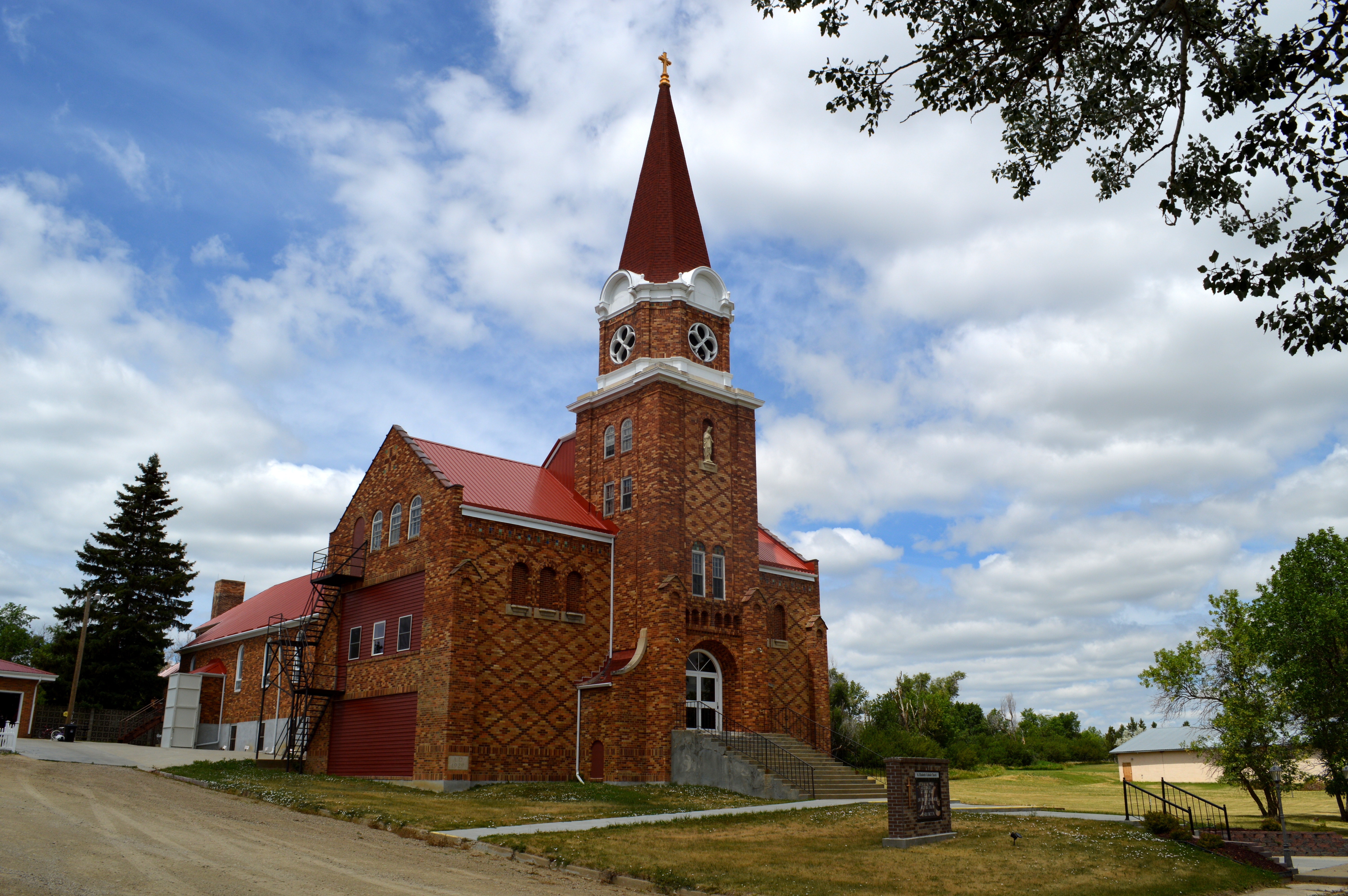
The bells of St. Elizabeth’s, imported from the motherland, set the cadence of the day—the soothing call of a common heritage. And a glance beyond their property fence line at the steeples at Schefield and Lefor offered the recognition of a shared identity. By mapping the visibility of St. Pius’s steeple, one recognizes the significance of this feature in the landscape, and this map suggests the church’s importance in the community’s sense of place.
The “there” that’s still there
As other chapters of this work illustrate, Stark County is now undergoing another transformation as its agricultural heritage bows to the new frontier of energy production. The swirling turbines of the Brady Wind Energy Center have replaced the steeple of St. Pius as the new manifestation of humankind’s reach to the sky. Swaths of agricultural fields are torn up as people delve past the topsoil and into the earth to reap new riches that the land has to offer. Homesteads built from materials pulled from the ground are pushed back under as farmers consolidate and seek to utilize every inch of their holdings. And the combines once positioned at the tops of hills as monuments to prosperity are being replaced by new symbols of wealth: the nodding hammers of oil wells.
This map demonstrates the way that this transformation has manifested in the architectural landscape. Areas highlighted in green represent those places where the farmsteads identified in the 1914 atlas still exist, while areas in red signify those places where more of the historic fabric has been lost. If you compare this map with the map showing the locations of oil and gas wells in the county, the relationship becomes apparent. As this new frontier steadily replaces its predecessor more of these properties become threatened and more of the legacy lost.

What’s out There?: Making Sense of Place
The act of mapping is a particularly daunting task in a landscape that changes with the wind, one that’s held hostage by the sky. But maps have the ability to show you where you’re from, where you’re going, and help chart a path to get there—to help make sense of a place. This project sought to understand the area from a particular scale and vantage, but the strength of this work is in its capacity to facilitate further research at a multitude of scales. What are the cultural manifestations of individual ethnic groups within the physical environment? Where did they come from? How did they get here? And how do the decisions they made one hundred years ago dictate the ways that the landscape is changing today?
Life for those in southwestern North Dakota is dictated by the sky and the soil, and new periods of industry and commerce seem to change with the wind. Expectations from beyond the region largely dictate the behaviors of those living within, as they adapt to survive in a national marketplace which seeks to prosper from the riches of the North Dakota earth. In this way, those living in Stark County are not far removed from their ancestors as they learn to reap their livelihood from the ground, to adapt and grow in an ever-changing environment. This story is told through the built heritage—farms that were sectioned and fenced, ancestral homes which raised generations, and prairie fields which were turned over by the sheer force and will of immigrants seeking a better life. Herein lies the sense of this place—the legacy of the past set against the shifting backdrop of the sky.
The heavens are in North Dakota, but one does not need to wait until nightfall to see them. You need only to look around at the monuments which stand testament to those who molded the landscape to what it is today, to those who have learned to pull life from the dirt.
- Scooter Pursley, "Stargazing in North Dakota: What's Out There," North Dakota Tourism (Website). Accessed December 2018. https://www.ndtourism.com/blog/stargazing-north-dakota-whats-out-there ↵
- George A. Ogle and Co., Standard Atlas of Stark County, North Dakota (Chicago: Geo. A. Ogle and Co., 1914). ↵
- As is suggested by US Population Census data. U.S. Census Bureau, Thirteenth Census of the United States: 1910--Population, Stark County, North Dakota (Washington, D.C.: Department of Commerce, Bureau of the Census, 1910.) ↵

